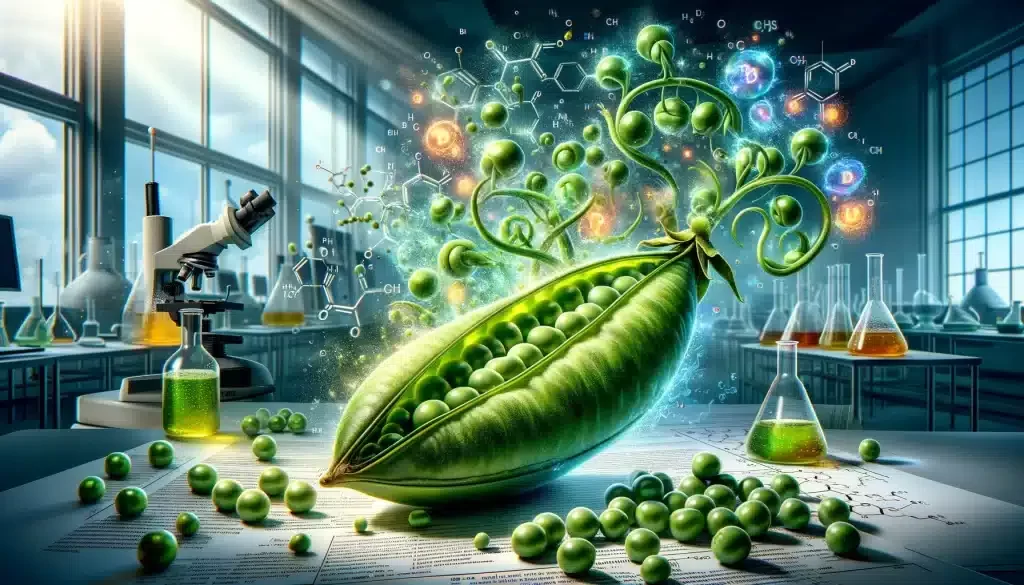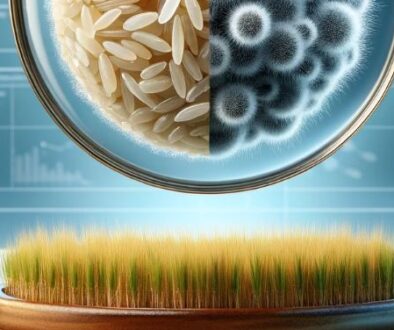Evaluation on the antioxidant mechanism of pea peptides
Explore the groundbreaking study on pea protein peptides’ antioxidative properties, revealing critical insights into amino acid composition and processing technology.
The article explores the antioxidative mechanisms of pea peptides derived from neutral protease hydrolysis of pea proteins and their purified tetrapeptides, highlighting the relationship between antioxidative properties, amino acid sequences, composition, and peptide processing technology.
Keywords: pea peptide; tetrapeptide; antioxidant; amino acid sequence
Abstract
This study investigates the antioxidative properties of oligopeptides obtained from the enzymatic hydrolysis of pea proteins by neutral protease and their purified tetrapeptides. The relationship and mechanism between the antioxidative properties of these peptides and their amino acid sequence, composition, and processing technology were analyzed. Results demonstrated that oligopeptides exhibit significantly higher antioxidative properties than tetrapeptides, with the scavenging rate of superoxide anion (O2-•) being more than three times higher for oligopeptides. Additionally, the antioxidative properties of peptides increased with purity. The study concludes that the antioxidative capacity of pea peptides is related to their amino acid composition and the types of constituents forming the peptides, rather than the number of amino acids. This research provides theoretical guidance and a basis for processing technology for the development of functional products from pea protein and its peptides, expanding the directions and fields for pea protein development and offering practical references for its high-value processing.
Introduction
Peas have become the world’s fourth-largest legume crop, rich in proteins, dietary fiber, vitamins, and minerals, and have various health benefits such as antibacterial, anti-inflammatory, spleen and stomach regulation, and cancer prevention. The biological value (BV) of pea protein is 47%-63%, with a protein efficiency ratio (PER) of 0.7-1.3. It is rich in the eight essential amino acids, most of which meet the FAO/WHO recommended values, making it an excellent source of lysine. Peptides, as substances that rapidly provide balanced protein nutrition, have been favored internationally, with China, the USA, and Japan designating peptide supplements as a national development priority in 2002, 2005, and 2006, respectively. Despite this interest, there are few studies on pea peptides.
Materials and Methods
This section details the materials and instruments used in the study, including pea protein provided by Yantai Shuangta Food Co., Ltd., neutral protease, Tris, DPPH, and other reagents and equipment. The experimental methods covered the preparation of pea protein oligopeptides, tetrapeptide purification, standard calibration tests, amino acid sequence determination, and various antioxidative activity assays.
Results and Analysis
The research found that the antioxidative properties of oligopeptides and tetrapeptides vary significantly, with oligopeptides showing higher activity. The sequence Val-Glu-Pro-Gln was identified in the N-terminal of tetrapeptides, providing insight into the relationship between peptide antioxidative properties and amino acid composition. The study also compared the scavenging rates of O2-•, DPPH, and •OH radicals and evaluated the reducing power of the peptides, finding that oligopeptides outperformed tetrapeptides in all assays.
Conclusion
The antioxidative properties of oligopeptides are significantly greater than those of tetrapeptides, and the antioxidative capacity increases with the purity of the tetrapeptide samples. The study highlights that processing technology significantly affects the antioxidative properties of peptides, suggesting that the beneficial antioxidative activity results from the synergistic action of various amino acids. This research provides a reference for the application of oligopeptides and tetrapeptides in functional foods, medical foods, cosmetics, and other industries, offering guidance for material selection, design, development, and application in these fields.
For more further detailed information of this research, feel free to contact our team for asssistance.
Original research by Wang Sai, Li Hui, Sun Wanting, Wang Meng, Chen Xuanhong, Zhou Quancheng*
(School of Agricultural Engineering and Food Science, Shandong University of Technology,
Shandong University Key Laboratory of Agricultural Products Functionalization Technology, Zibo 255049) Article ID: DOI: 10.13684/j.cnki.spkj.2019.10.051












